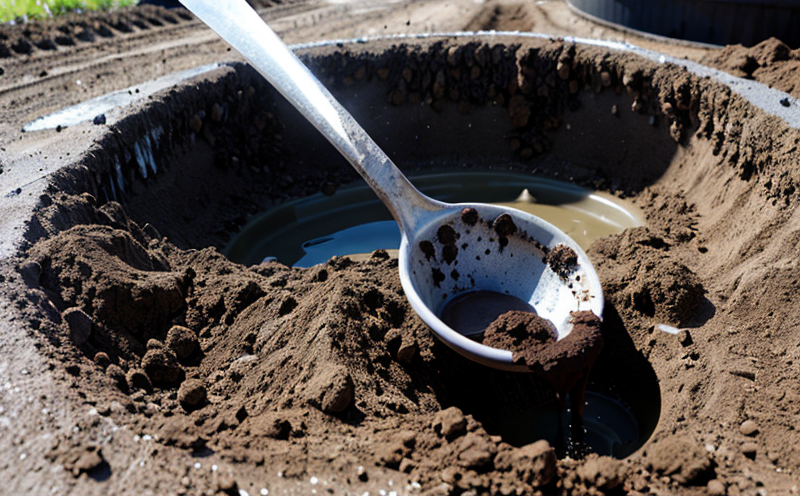EPA 8290 Polychlorinated Dioxins in Sludge Test
The EPA Method 8290: Determination of Polychlorinated Dibenzodioxins (PCDDs) and Polychlorinated Dibenzofurans (PCDFs) is a comprehensive analytical procedure designed to detect trace levels of dioxins in sludge samples. This method, established by the U.S. Environmental Protection Agency (EPA), is crucial for ensuring environmental compliance and safeguarding public health. The test focuses on polychlorinated dibenzodioxins (PCDDs) and dibenzofurans (PCDFs), which are among the most toxic chemicals known to science.
These compounds, collectively referred to as dioxins, are highly persistent in the environment and can bioaccumulate in the food chain. They are formed during processes such as waste incineration, metal smelting, and the production of certain chlorinated pesticides. Given their persistence and toxicity, stringent controls are necessary to prevent contamination of water and soil resources.
The EPA 8290 method involves several stages, each designed to ensure accurate detection and quantification of dioxins in sludge samples:
- Extraction: The sludge sample is extracted using a mixture of solvents, typically tetrachloroethylene (Perc) or dichloromethane. This step ensures that the dioxin compounds are released into solution.
- Cleanup and Concentration: The extracts undergo further processing to remove interfering substances, such as other organic compounds, through various solid-phase extraction techniques.
- Isomer Separation: The purified extract is subjected to chromatography (typically gas chromatography-mass spectrometry or GC-MS) to separate the different dioxin isomers. Each isomer has a unique mass-to-charge ratio, allowing for precise identification and quantification.
- Quantification: Once separated, the isomers are detected using mass spectrometry (MS), which provides quantitative data on their concentrations in the sample.
The method is designed to detect dioxins at very low levels, typically below parts per trillion (ppt). This sensitivity ensures that even trace amounts of these harmful compounds can be identified and reported accurately. Compliance with EPA 8290 is mandatory for facilities involved in waste management, wastewater treatment, and other processes that generate sludge.
The importance of this test lies not only in its role in environmental compliance but also in preventing potential health risks associated with dioxin exposure. Dioxins can cause a wide range of adverse effects, including reproductive disorders, developmental issues, and immune system suppression. By ensuring the absence or presence at acceptable levels, this method plays a critical part in protecting public health.
It is essential to note that the EPA 8290 method is not just about detecting dioxins; it also involves rigorous quality control measures throughout the entire process. This includes using standard reference materials (SRMs) for calibration and validation, as well as performing blank and replicate analyses to ensure accuracy and precision.
In summary, the EPA 8290 Polychlorinated Dioxins in Sludge Test is a vital tool for environmental protection and public health. Its stringent protocols and high sensitivity make it indispensable for industries dealing with sludge management, waste treatment facilities, and other entities involved in regulated waste disposal.
Benefits
- Compliance Assurance: Ensures that your facility meets regulatory requirements for dioxin levels in sludge.
- Risk Mitigation: Identifies potential health risks associated with dioxins, allowing for timely corrective actions.
- Reputation Enhancement: Demonstrates a commitment to environmental responsibility and public safety.
- Data Integrity: Provides reliable and accurate data that can be used in decision-making processes.
The results of this test not only help in meeting regulatory standards but also contribute to the overall sustainability efforts of your organization. By adhering to EPA 8290, you are taking a proactive stance towards environmental stewardship, which is increasingly valued by stakeholders and the public alike.
Quality and Reliability Assurance
The quality and reliability of our testing services are paramount in ensuring that your organization meets all regulatory requirements while maintaining the highest standards of accuracy. We employ a team of highly skilled professionals with extensive experience in environmental analysis, particularly in dioxin detection.
To maintain the integrity of our results, we adhere to strict laboratory protocols and use state-of-the-art instrumentation. Our laboratories are equipped with advanced gas chromatographs coupled with mass spectrometers (GC-MS) that provide high-resolution data for accurate identification and quantification of dioxins. Calibration is performed using certified reference materials (CRMs), ensuring consistency across all tests.
Additionally, we implement rigorous quality control measures at every step of the process. This includes performing blank checks to rule out contamination, as well as replicate analyses to verify results. Our laboratories are accredited by international standards such as ISO/IEC 17025:2017, ensuring that our methods meet the highest scientific and technical requirements.
We also maintain a robust quality assurance program that includes regular internal audits and external accreditation reviews. This ensures that we consistently deliver accurate and reliable results, which are critical for making informed decisions regarding environmental compliance and public health.





